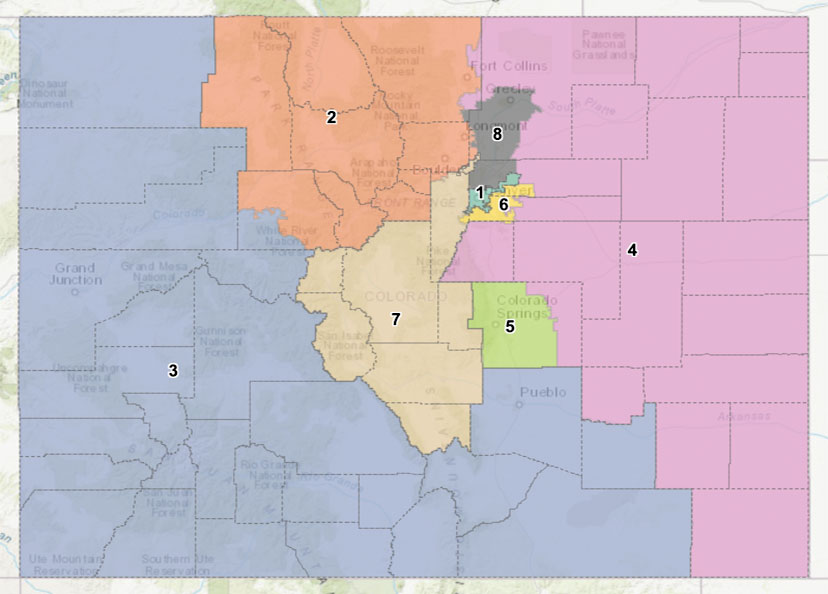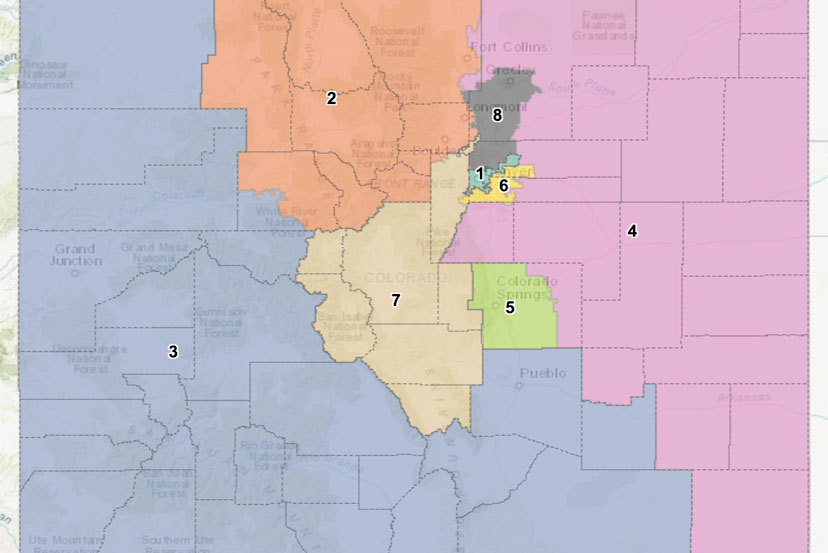The Colorado Independent Congressional Redistricting Commission this week approved a final plan that counsel will submit to the Colorado Supreme Court today, October 1.
The Colorado Supreme Court will issue an opinion no later than November 1.

Due to population growth documented by the 2020 census data, Colorado gained an eighth congressional district.
The plan was approved by a vote of 11 in favor and 1 opposed, fulfilling the constitutional requirement that a final map must be approved by a super-majority of eight of the twelve commissioners, including at least two unaffiliated commissioners. The approved final plan was previously unofficially titled ‘Staff Plan 3 Coleman Amendment’ and will now be titled the ‘Final Approved Plan’.
“The thousands of public comments from Coloradans, diligent map-making from the staff, and thoughtful discussions from the commission are all what led us to this moment and it has been an honor to chair the first Colorado Independent Congressional Redistricting Commission and hope we’ve set a standard for other states to follow in the future,” acknowledged Chair Carly Hare.
Rep. Lauren Boebert, the Republican who currently represents the 3rd District, would still live within its boundaries. The district would have a 9.3 percentage point Republican advantage, according to historic election data. The 3rd District will be approximately 25% Hispanic, according to Commission staff.
The new map creates three districts with a Republican advantage and five with a Democratic advantage, though some, such as the 8th District, are so slight that they could be swing districts.
State Sen. Kerry Donovan of Vail, possibly the frontrunner among Boebert’s potential Democratic challengers, would live in the 2nd District in this new map. Members of Congress do not need to live in the districts they represent, but Donovan has not yet indicated how the proposed map could affect her campaign.
As stated in the Colorado Constitution, the new congressional districts must:
- Have equal population, justifying each variance, no matter how small, as required by the U.S. Constitution;
- Be composed of contiguous geographic areas;
- Comply with the federal “Voting Rights Act of 1965,” as amended;
- Preserve whole communities of interest and whole political subdivisions, such as counties, cities, and towns;
- Be as compact as is reasonably possible; and
- Thereafter, maximize the number of politically competitive districts.
- Districts cannot be drawn for the purpose of:
- Protecting incumbents or declared candidates of the U.S. House of Representatives or any political party; or
- Denying or abridging the right of any citizen to vote on account of that person’s race or membership in a language minority group, including diluting the impact of that racial or language minority group’s electoral influence.
This was the first time Colorado tasked the redistricting process to an independent commission, rather than the state legislature. Voters approved the process in 2018. Colorado is one of seven states that use an independent commission for redistricting.

